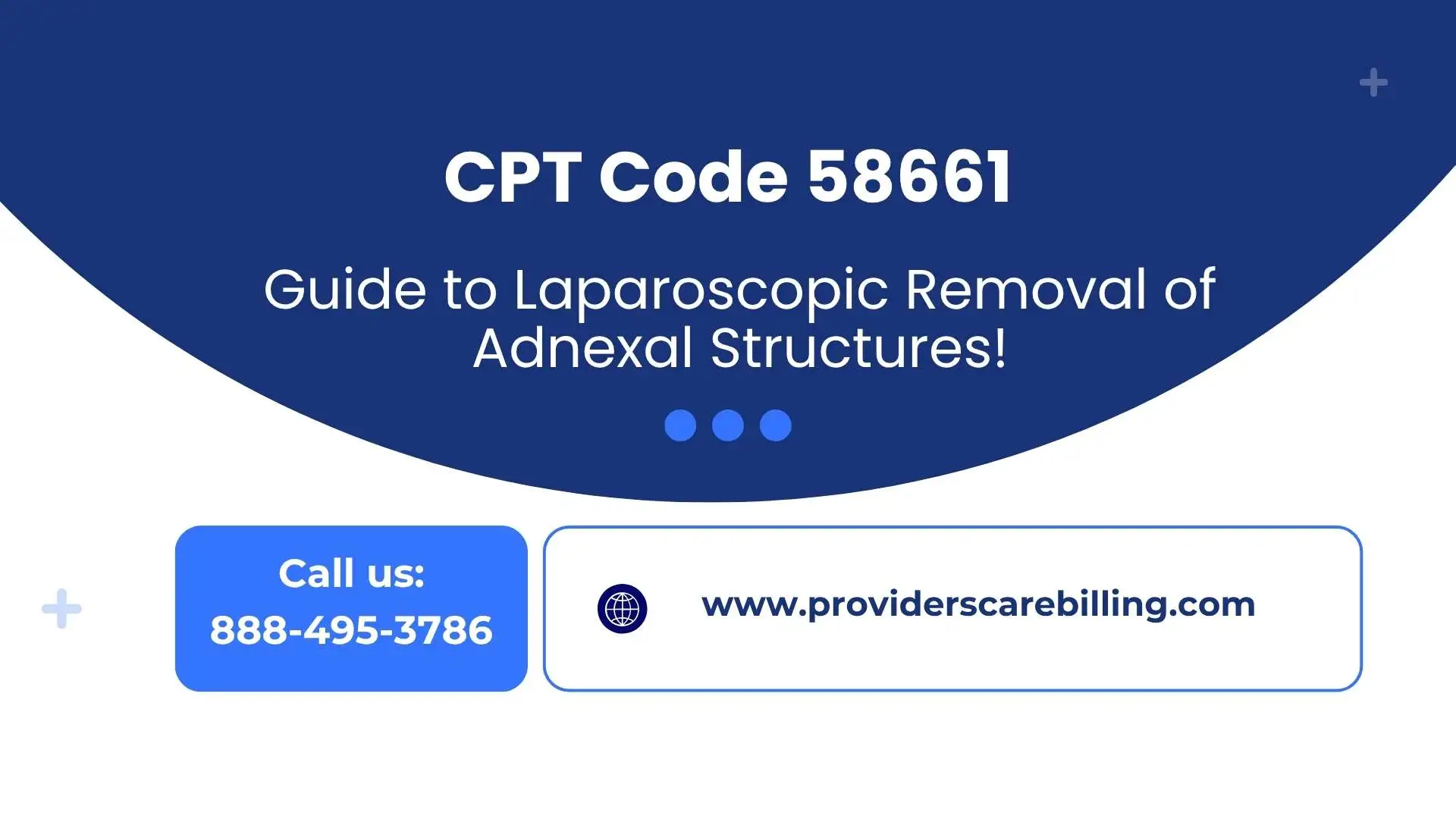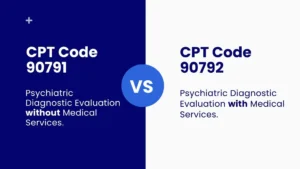It is a fact that precise CPT coding is essential in women’s surgery, not only during the process of billing, but also for the safety of the patient, legal documentation, and reimbursement. One of the most commonly used codes in laparoscopic gynecology is CPT code 58661. It includes laparoscopic excision of the fallopian tubes or the ovaries and finds wide application in operations such as bilateral salpingectomy, sterilization by tubal ligation, etc.
This is the reason why it is also referred to as the bilateral salpingectomy CPT code. It is high time to find out what coders, billers, and providers should know about this code and its application.
What is CPT Code 58661?
58661 CPT code deals with surgeries that are performed using a laparoscope; this tool makes the surgery less invasive. The ovaries and fallopian tubes of the woman are removed during this procedure.
Note that this code supports doing laparoscopic tubal sterilization in which the physician removes the tubes completely rather than just clipping or burning them.
In case you are asking yourself, what is the anesthesia code in a tubal ligation, then the anesthesia service is usually treated as a separate billing, depending on the complexity, with a code CPT 01992 being used.
Why and When is CPT 58661 Used?
Such code would be suitable in various clinical cases. As an illustration, women can choose bilateral salpingectomy as a permanent way of avoiding pregnancy. Some will need a fallopian tube to be removed because of an ectopic pregnancy, an infection, or a mass. At times, the procedure is conducted to lower the risk of ovarian cancer. CPT 58661 is the right code in all of these cases. It is unlike CPT code 58700, which is salpingectomy during an open abdominal surgery and not laparoscopic.
Most patients look up on the internet, typing in, where to get my tubes tied; or, how much is it to get tubes tied without insurance? The price may depend on the area and facility. The uninsured price of the tubes tied process varies between $1,500 and $6,000, on average, depending on whether it is postpartum or laparoscopic and even when combined with another procedure, such as CPT 59409 (vaginal delivery) or CPT 59514 (cesarean delivery only).
The Right Diagnosis Codes for CPT 58661
It is noteworthy to pair CPT 58661 with the correct diagnosis codes. These are some typical ones:
- Z30.2 – Encounter for sterilization
- Z40.02 – Prophylactic removal of ovary
- Z40.09 – Other prophylactic removal
- N83.20 – Ovarian cyst, unspecified
- P27.1 – Bronchopulmonary dysplasia used for neonatal claims
These help in proving the medical necessity whether this procedure is performed due to sterilization or due to treating a disease.
Postoperative muscle weakness is another factor to consider during recovery, especially in older patients or those with preexisting conditions. You can learn more about how ICD-10 Code M62.81 is used to document generalized muscle weakness in this billing guide.
Other Codes Frequently Billed Together
CPT 58661 is sometimes billed together with other Ob/Gyn care, such as
- CPT 59425 – For antepartum care only, that covers 4-6 visits.
- CPT 59410 – Vaginal delivery with postpartum care.
- CPT 59430 – Postpartum care alone.
- CPT 92540 – Vestibular testing, sometimes requested in pre-op evaluations that vary by region.
- CPT 58573 – Laparoscopic hysterectomy involving removal of tubes and ovaries.
- CPT J1750 – Injection, iron dextran used in some OB patients with anemia.
The codes may include CPT 22612 or CPT 64479 (injection of nerve root block) or even TFESI (transforaminal epidural steroid injection) in spine related surgeries. They are not related to GYN procedures yet they are present in a lot of claim systems and should not be mistaken.
Codes Causing Misconception with 58661
People can mix up CPT 58661 with other gynecologic codes. For example, CPT 58670 comes when tubes are just burned or clipped and not removed completely. But many doctors now prefer removing the tubes instead of just blocking them, so that there is no risk of cancer. That’s why 58661 is now the better choice when the surgery is done with a scope.
On the other hand, CPT 58700 is for open surgeries and shouldn’t be used if the procedure is done with a scope.
Also, don’t mix it up with codes like CPT 22612 used for spine surgery, CPT 63655 used for spinal devices, or CPT 59400 used for full pregnancy care. These look similar but are used in totally different medical areas. Mixing them up can lead to billing mistakes in electronic records or insurance claims.
When Modifier 50 Comes into Play?
Because 58661 is a unilateral procedure, when both fallopian tubes or ovaries are removed, you will be required to use modifier 50 to indicate a bilateral removal. This is important to have good reimbursement. Thus, in case a surgeon takes away both tubes during sterilization, there will be a need for billing code 58661-50. Failure to include the modifier can give way to denial or underpayment of claims.
Consent Forms and Coverage
When sterilization is the goal, most insurance companies and Medicaid programs need a sterilization consent form. This form must be signed 30 days in advance of the surgery. Without this documentation, there is a chance of claims denial using the laparoscopic tubal sterilization CPT code 58661.
Also, providers often ask, “Does insurance cover bilateral salpingectomy?” The answer is yes, especially when medically indicated or for sterilization under preventive care coverage. But proper paperwork and prior authorization are key.
Some Billing Hacks
The remarkable medical billing services include clear documentation. With this specific code, practitioners must pay attention to:
- The surgery used a laparoscope
- What structures were removed: the fallopian tube, ovary, or both
- If it was unilateral or bilateral
Don’t forget modifiers! For example, if only one side was treated, use Modifier LT (left) or RT (right). Also, be careful with this tube ligation CPT code; it is only for tying the tubes during a C-section, not for laparoscopic sterilization.
Final Thoughts!
To sum up, healthcare providers can never ignore CPT code 58661 while performing women’s health surgeries. The accurate use of this code can help make sure doctors get paid properly, insurance claims do not get denied, and patient records stay clear and correct. Mistakes in using this code can lead to many problems. But don’t worry, an efficient medical billing company can help you avoid those common errors and make billing easier and more accurate with fewer headaches, and better care for the patients.




